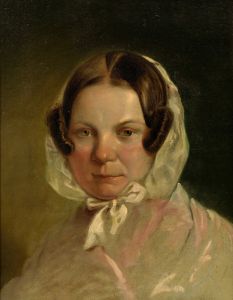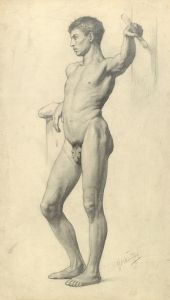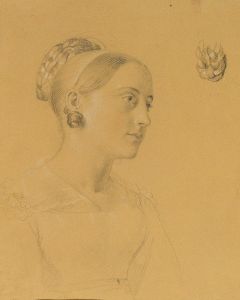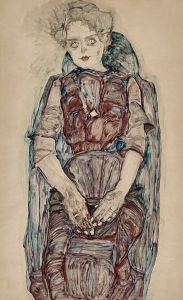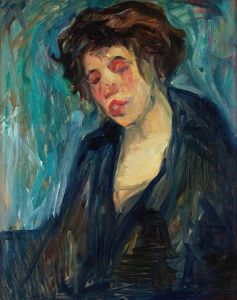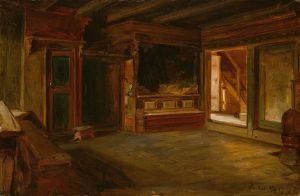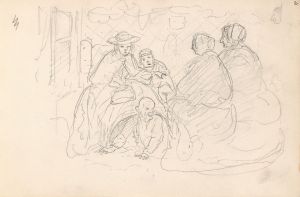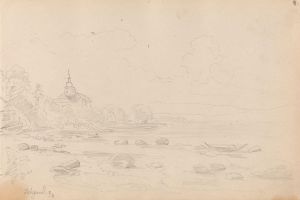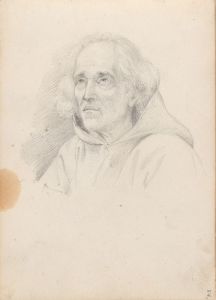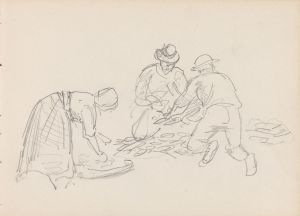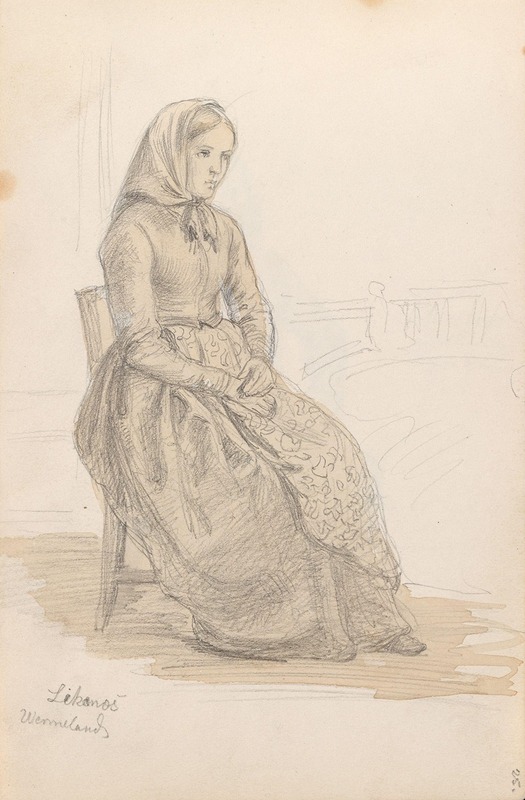
Sittende kvinne, Likenäs
A hand-painted replica of Adolph Tidemand’s masterpiece Sittende kvinne, Likenäs, meticulously crafted by professional artists to capture the true essence of the original. Each piece is created with museum-quality canvas and rare mineral pigments, carefully painted by experienced artists with delicate brushstrokes and rich, layered colors to perfectly recreate the texture of the original artwork. Unlike machine-printed reproductions, this hand-painted version brings the painting to life, infused with the artist’s emotions and skill in every stroke. Whether for personal collection or home decoration, it instantly elevates the artistic atmosphere of any space.
Adolph Tidemand was a prominent Norwegian painter in the 19th century, known for his detailed and evocative depictions of Norwegian folk life and traditions. One of his lesser-known works is "Sittende kvinne, Likenäs," which translates to "Seated Woman, Likenäs." This painting is a fine example of Tidemand's ability to capture the essence of rural Norwegian life, focusing on the everyday experiences and cultural heritage of the people.
Adolph Tidemand was born on August 14, 1814, in Mandal, Norway. He studied art in Copenhagen and later in Düsseldorf, Germany, where he became associated with the Düsseldorf school of painting. This school was known for its detailed and realistic style, which Tidemand adopted and adapted to suit his interest in Norwegian subjects. Throughout his career, Tidemand traveled extensively throughout Norway, gathering inspiration from the landscapes and people he encountered. His works often reflect a deep appreciation for Norwegian culture and history, and he is celebrated for his role in the national romantic movement in Norway.
"Sittende kvinne, Likenäs" is believed to have been painted during one of Tidemand's many travels. Likenäs is a small locality in Sweden, close to the Norwegian border, which Tidemand may have visited during his journeys. The painting depicts a woman seated in a traditional setting, likely reflecting the attire and environment typical of the region during that period. Tidemand's attention to detail is evident in the careful rendering of the woman's clothing and the surrounding elements, which provide insight into the cultural context of the time.
The painting is characterized by Tidemand's typical use of light and shadow to create depth and realism. His ability to portray the textures of fabric and the subtleties of human expression adds a layer of intimacy to the work, inviting viewers to connect with the subject on a personal level. This focus on individual experience within a broader cultural framework is a hallmark of Tidemand's work, highlighting his interest in the intersection of personal and national identity.
While "Sittende kvinne, Likenäs" may not be as widely recognized as some of Tidemand's other works, such as "Haugianerne" or "Brudeferden i Hardanger," it nonetheless contributes to his legacy as a painter deeply invested in the portrayal of Norwegian life. His works are considered important cultural artifacts, offering a window into the 19th-century Norwegian experience and the values and traditions that shaped it.
Adolph Tidemand's influence extends beyond his paintings; he played a significant role in the development of Norwegian national identity during a time of growing cultural and political awareness. His works are celebrated for their historical significance and artistic merit, and they continue to be studied and appreciated for their contribution to the understanding of Norwegian heritage.
In summary, "Sittende kvinne, Likenäs" exemplifies Adolph Tidemand's dedication to capturing the essence of Norwegian and Scandinavian rural life. Through his detailed and empathetic portrayal of his subjects, Tidemand provides a valuable glimpse into the cultural landscape of his time, making his work an enduring part of Norway's artistic legacy.





